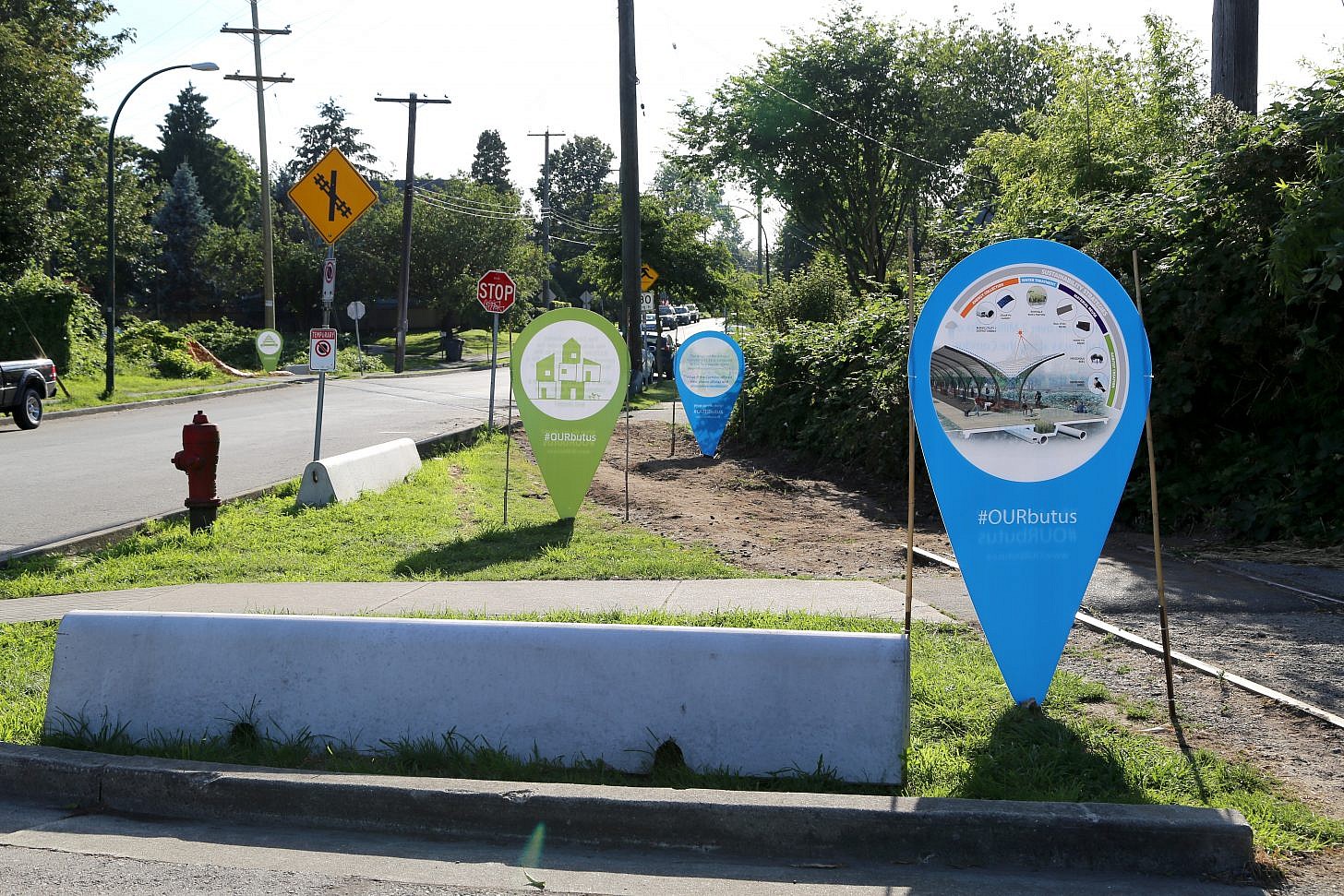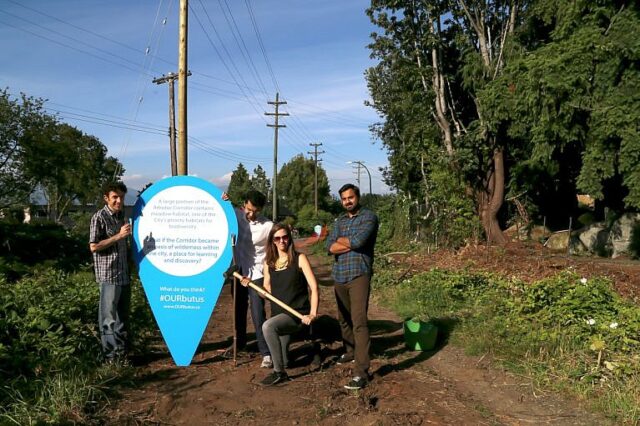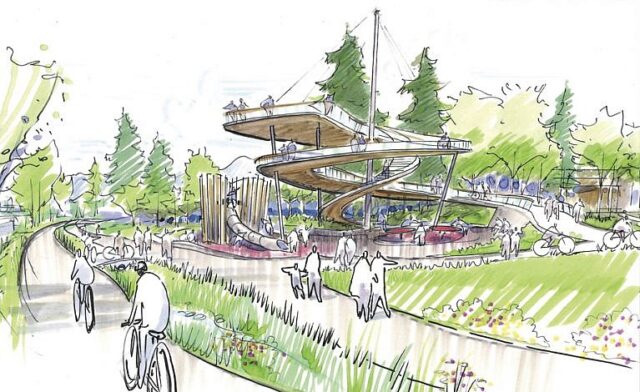It’s time for public engagement
The lack of rail service, however, did open the door to questions about the Corridor’s future. The City of Vancouver wanted to use it for public transit or a greenway, while Canadian Pacific Rail (CP) – which owned the line – wanted to sell the land for residential and commercial development. The City and CP engaged in a protracted 15-year legal and public relations battle, with the City eventually purchasing the Corridor in March 2016 for $55 million.
The official press release announcing the sale included a sketch of the City’s preliminary vision for the revitalized greenway. The announcement was generally well received, but it also made some people contemplate the importance of a robust public engagement process for such a beloved community asset. One group looking to jumpstart discussions about the greenway was a collection of planners, architects and landscape architects in DIALOG’s Vancouver studio.
These DIALOGers, who shared a passion for urban design and greener, more liveable cities, believed that the best way to maximize public engagement on this space would be to spark a larger city-wide conversation about potential futures for the greenway and even the ownership of public spaces.
“A group of us were brainstorming and came up with the idea of staging a renegade intervention in the Corridor,” said Molly Steeves, an urban planner at DIALOG who was involved in the campaign.
Asking deep questions
The team came up with questions such as: “What if the Corridor became a community of small-scale studios, micro-lots, and shops?”, “What if the Corridor offered new places of play and alternative recreation?”, and “What if the Corridor explored ideas about material reuse and other sustainability strategies?”
Esteban Matheus, an architect at DIALOG who was also involved in OURbutus, explained the team’s tactics: “We printed questions and graphics representing potential options for the greenway on 20 six-foot-high unbranded map marker icons, and placed them in three locations along the corridor. We erected them at night, so we could facilitate a larger community-based conversation about the Corridor without injecting DIALOG into the discussion.”
Next steps – A design vision
Markers were rotated through the locations as opportunities arose, and the conversation got rolling on social media. OURbutus had its own hashtag on Twitter, and Vancouverites tweeted about the initiative. There were posts on Instagram, and even a website. An OURbutus Twitter post was quoted in the local media.
The campaign ran its course over that spring and summer, and achieved its primary objective of generating conversations about the greenway – some of which were very opinionated. The discussions also caught the attention of City staff, who deduced that DIALOG was behind the OURbutus campaign.
In March 2017, the City took the next step in reimagining the greenway and issued a formal Request for Proposal for a comprehensive design vision. DIALOG partnered with engineering firm Mott MacDonald (MM) on this submission, and was ultimately awarded the contract to develop a design vision and implementation strategy for the greenway.
The OURbutus campaign ended up being a small but significant part of the larger design exercise. “It demonstrated DIALOG’s genuine interest and commitment to improving community wellbeing along the Corridor,” said Jennifer Fix, an urban planner at DIALOG.
Crafting the vision
Over the next several months, DIALOG’s planning, landscape and architecture teams worked with MM to craft the vision and strategy. A fundamental component of that process was re-connecting with area residents to get their thoughts on the future of the greenway – precisely what the OURbutus campaign sought to achieve in the first place. DIALOG acted as facilitators at the Arbutus Greenway Design Jam and as representatives at community engagement events. The City also held separate discussions with the Musqueam First Nation, as the greenway crosses unceded Musqueam traditional territories.
The final design concept delivered by DIALOG and MM, in collaboration with the City of Vancouver, envisions a vibrant and dynamic corridor for walking, wheeling, cycling, and a future streetcar line that passes through eight distinct character zones. In July 2018, the team’s vision received unanimous approval from Vancouver City Council. It also went on to win a 2019 Planning Institute of BC award for Excellence in Policy Planning. Detailed design has now started on zones three and eight of the greenway, with construction scheduled to be completed by 2022.
Final thoughts
Thought leaders don’t often set out to be thought leaders. They simply step up and take the initiative. They start conversations, stage renegade interventions and facilitate change. They do their part, big or small, make their cities better places. And that is precisely what that small group of DIALOGers did back in the spring of 2016.



